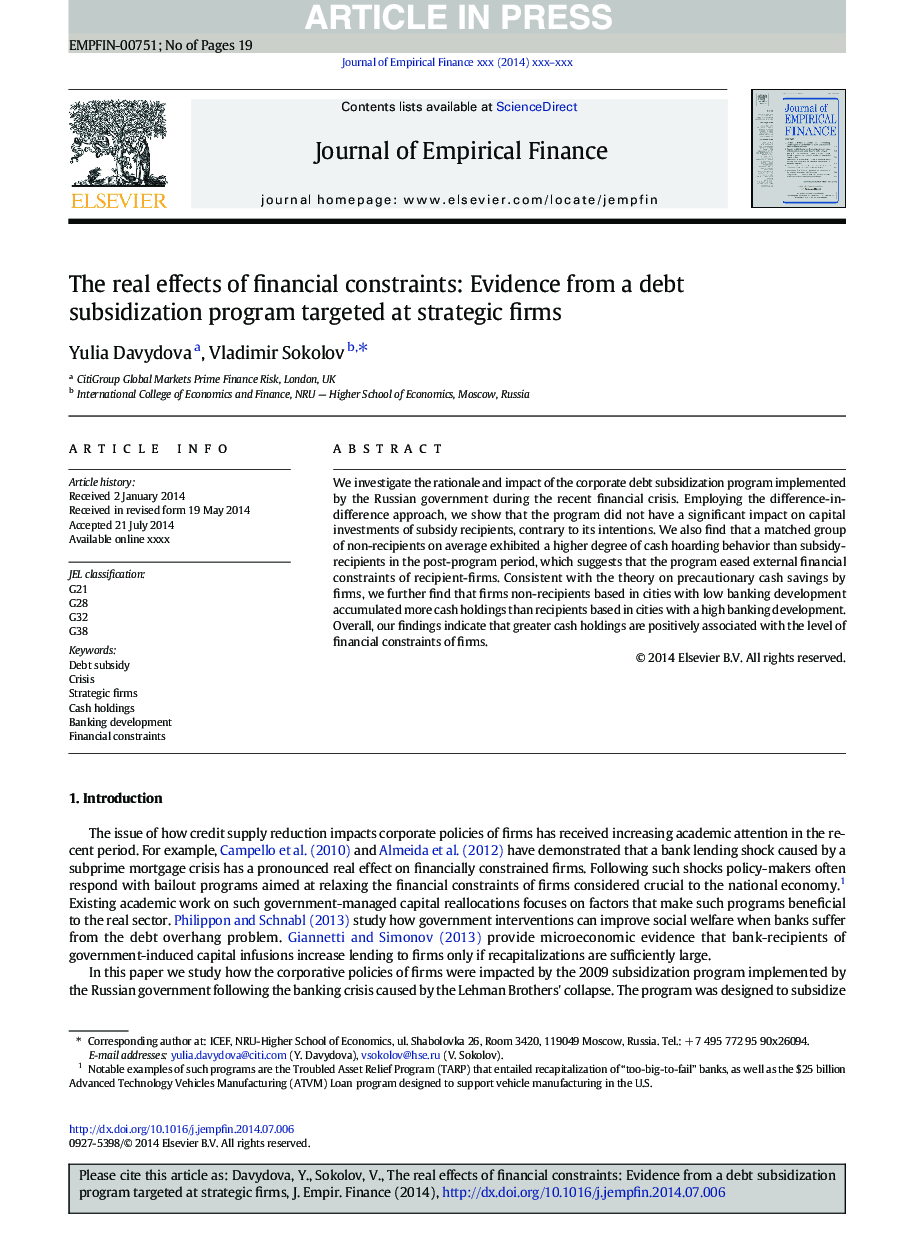| Article ID | Journal | Published Year | Pages | File Type |
|---|---|---|---|---|
| 7360956 | Journal of Empirical Finance | 2014 | 19 Pages |
Abstract
We investigate the rationale and impact of the corporate debt subsidization program implemented by the Russian government during the recent financial crisis. Employing the difference-in-difference approach, we show that the program did not have a significant impact on capital investments of subsidy recipients, contrary to its intentions. We also find that a matched group of non-recipients on average exhibited a higher degree of cash hoarding behavior than subsidy-recipients in the post-program period, which suggests that the program eased external financial constraints of recipient-firms. Consistent with the theory on precautionary cash savings by firms, we further find that firms non-recipients based in cities with low banking development accumulated more cash holdings than recipients based in cities with a high banking development. Overall, our findings indicate that greater cash holdings are positively associated with the level of financial constraints of firms.
Related Topics
Social Sciences and Humanities
Economics, Econometrics and Finance
Economics and Econometrics
Authors
Yulia Davydova, Vladimir Sokolov,
